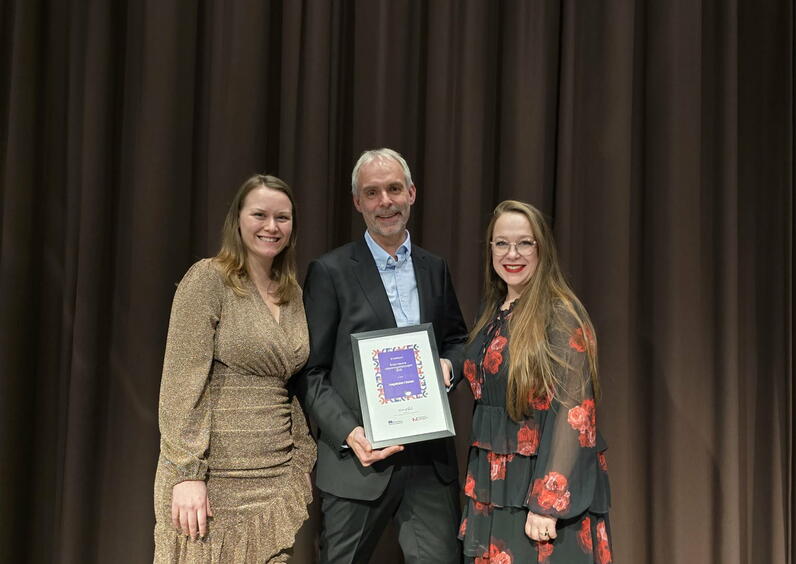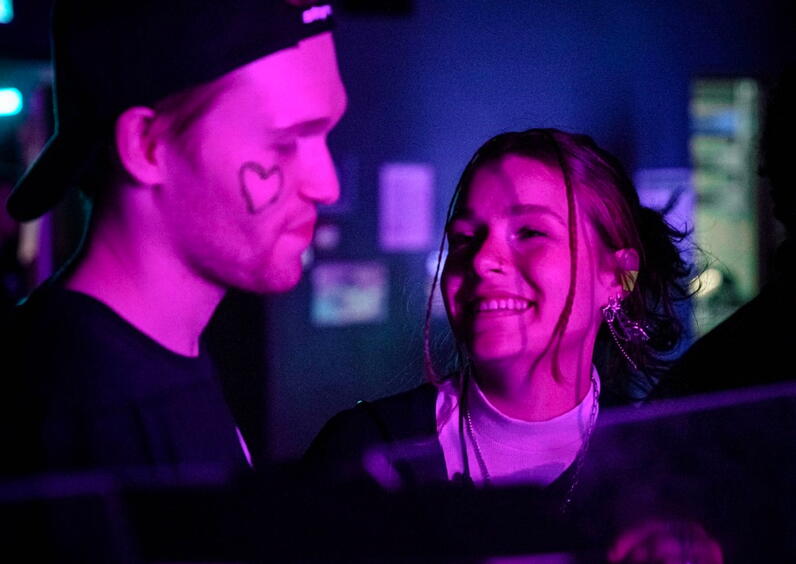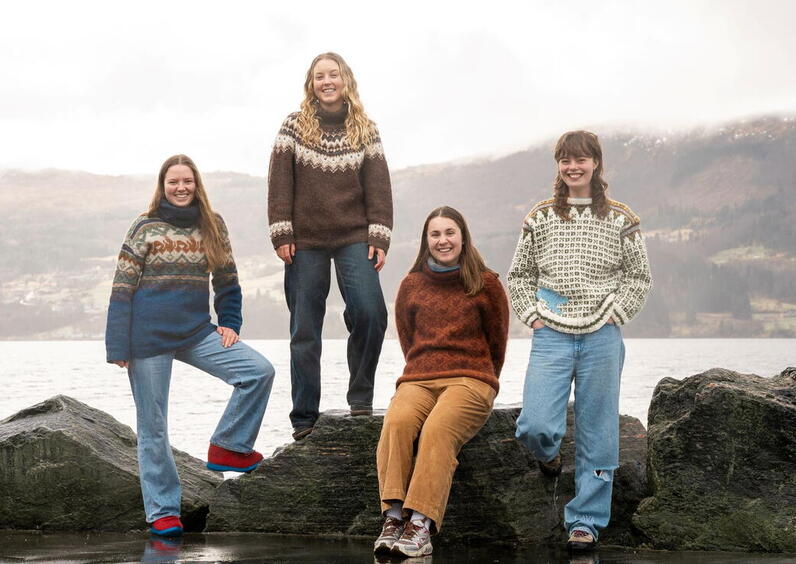Pixar veteran inspired media students
Bill Wise played a key role in blockbuster films such as Toy Story and The Incredibles. Last week the Pixar veteran shared of his expertise in animation and innovation and gave a positive outlook on the future of the profession in light of the increasing impact of AI.
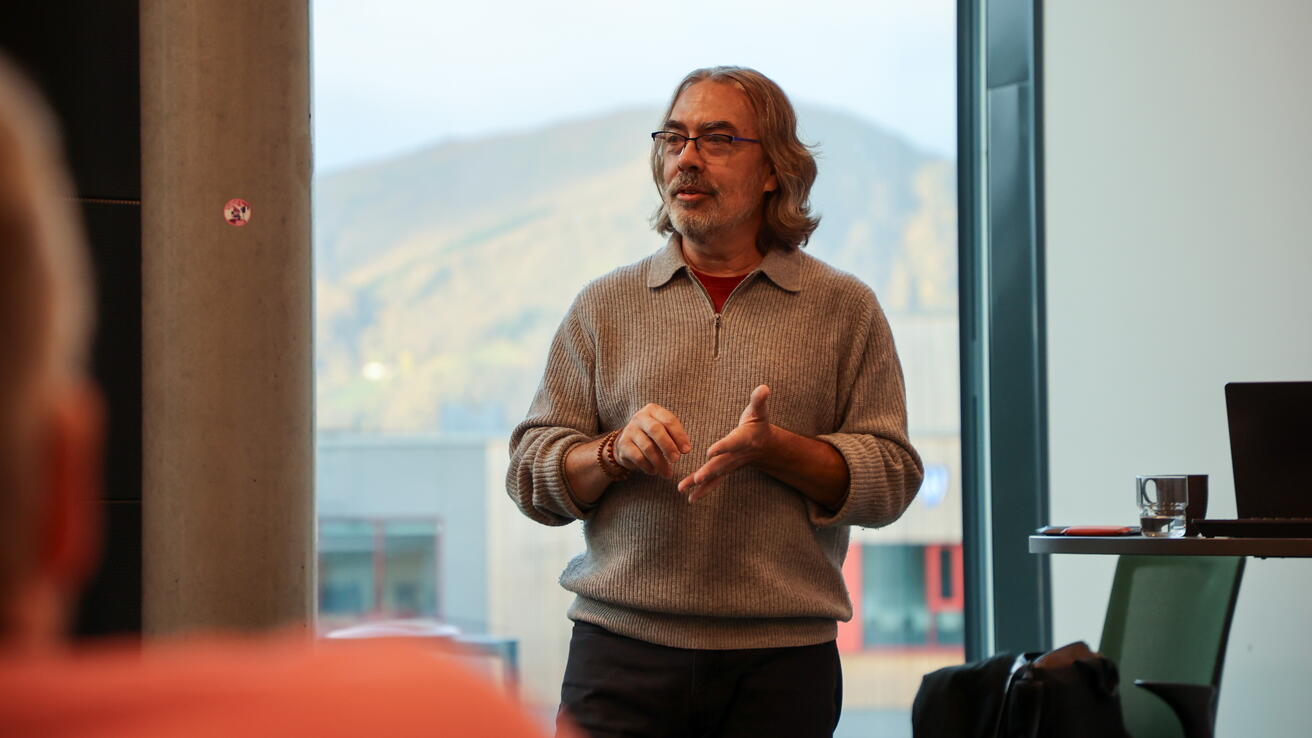
Bill Wise shared insights from a rich career at the legendary animation studio Pixar. Photo: VUC / Steinarr Sommerset.
This is a translation of an article originally published in Norwegian.
Toy Story, Monsters, Inc., The Incredibles, WALL·E, and Brave: For thirty years, the animation studio Pixar have captivated audiences with compelling storytelling and pioneering use of technology.
Bill Wise was for many years a central figure behind Pixar’s magic. He worked for the company from 1994 to 2023, eventually becoming head of visual effects (VFX). At Pixar, he was responsible for everything from lighting in Toy Story (1995) to character development in The Incredibles (2004).
It was therefore quite an occasion to have him guest lecturing over two days and talking to students in the Bachelor of Media Production, Bachelor of Animation, and Master in Media Practices. Wise shared from his experience and gave inspiration to many future media workers in the audience.
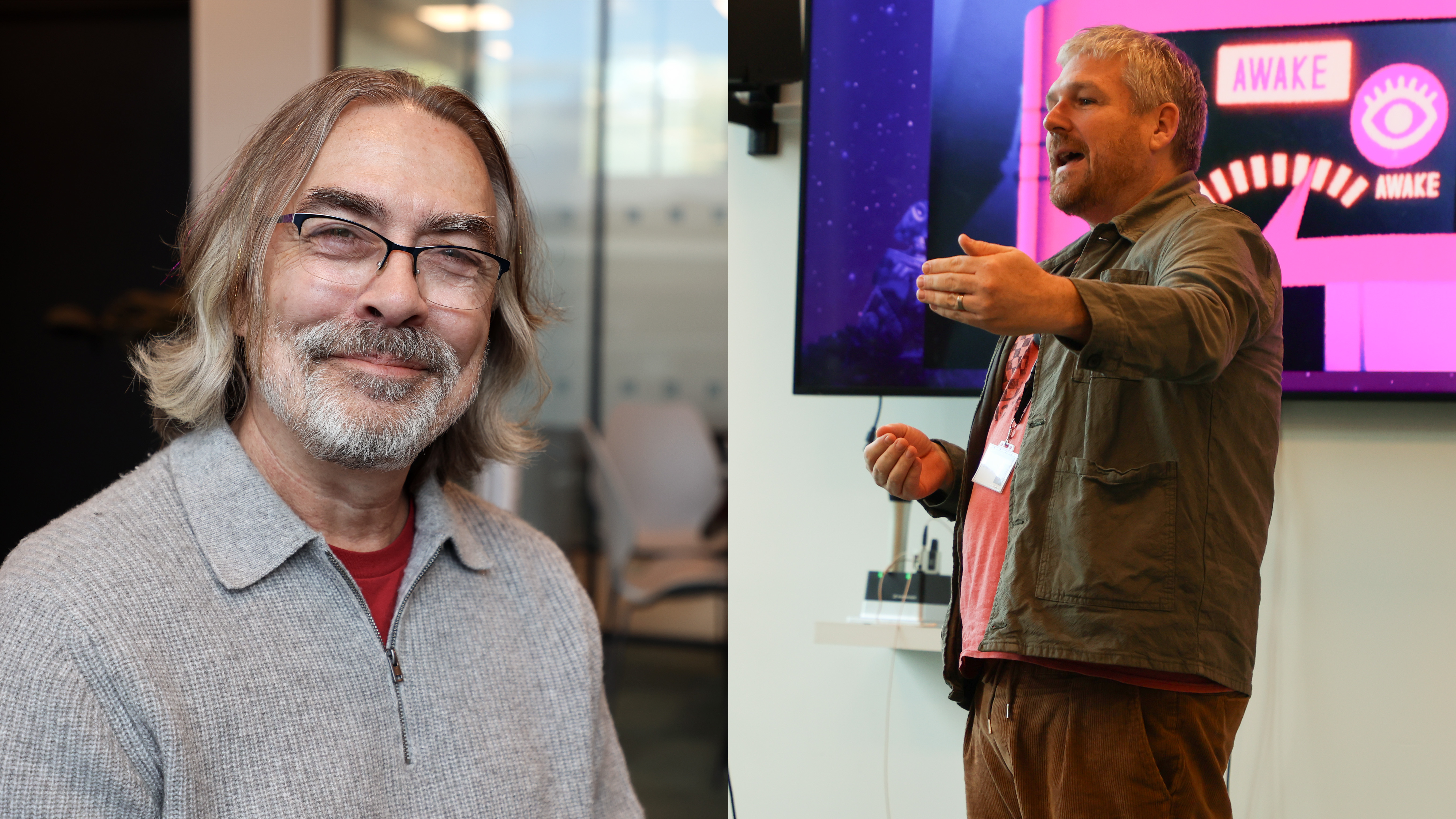
Aha Moments That Spark the Flame
“It is really important for students to have industry insight from leaders like Bill, because it brings alive complex ideas and contexts aligned to real world applications. These are often the aha moments that students remember as the sparks that ignited them,” says Assistant Professor Jon Harman from the Department of Film and Animation at the Faculty of Media and Journalism.
Wise’s first talk in Volda was for the students of the BA Media Production, who were treated to an engaging lecture on innovation in storytelling – exploring how to navigate change in a constantly evolving medium.
He himself is an example of tackling such change and the importance of keeping an open mind. With a background in fine art, Wise found his way into 3D animation when the technology began to flourish in the early 1990s. At the time Pixar found itself in a technological competition with DreamWorks as its main rival, which he cheekily referenced with a few well-placed jokes.
Wise took the students on a journey from 40,000-year-old cave paintings, through the history of art and film, and into the realm of artificial intelligence (AI). His main point was to highlight how visual communication, art, and technology have always been interconnected.
“In every era, I see artists embracing new technology to create expressions within art forms that weren’t previously possible – and this technology is important for the artists to earn a living from their art. Art for art’s sake is wonderful, but artists have always had to put food on the table, and we do that with our tools and by staying open to new approaches.”
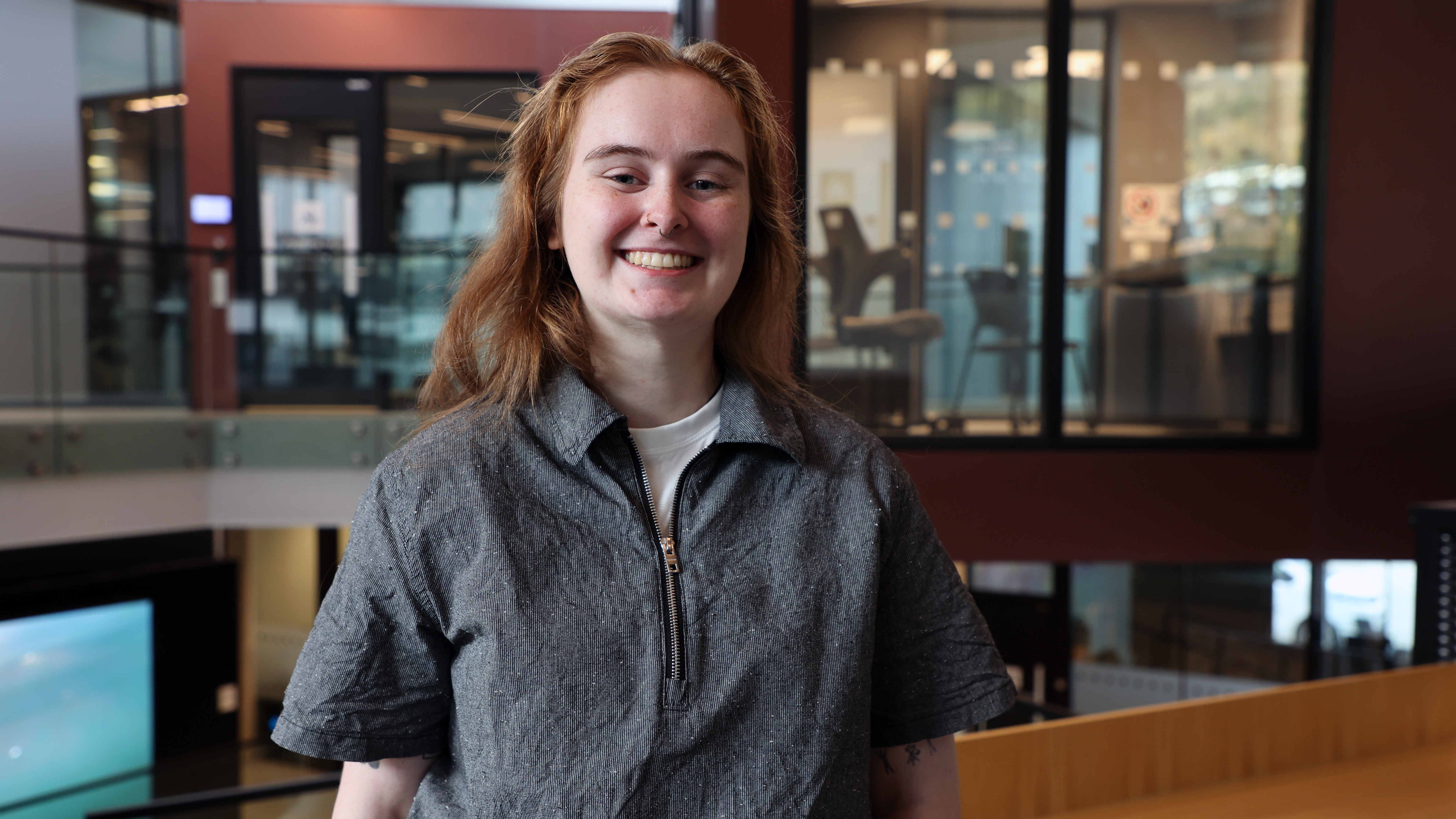
An Enlightening Encounter for Creative Students
Sofie Helset is a third-year student in the BA Media Production and was one of many who listened intently during Bill Wise’s entertaining lecture.
What’s it like having a Pixar legend as a lecturer?
“There’s not much else to say except that it’s really cool! I think this visit was absolutely brilliant.”
Sofie's main focus is editing, but also include video effects and graphic design. She is therefore well-acquainted with the Pixar universe that Wise helped shape over nearly thirty years.
“I know all the works he’s been involved in, and the fact that he’s played such a major role in so many incredibly cool and groundbreaking films makes it really, really useful to learn from his experiences,” Sofie says with a smile.
- Feeling inspired? Apply to the Master in Media Practices in beautiful Volda, Norway!
The advanced and user-friendly tools that Sofie and her fellow students benefit from today are light-years ahead of what Wise worked with at the start of his career. When he was tasked with creating lighting and shadows for Pixar’s first feature filmToy Story in 1995, he likened the workflow to programming a spreadsheet with few visual aids—their methods had to be invented along the way.
Wise emphasised that, just like with AI today, there has always been fear and scepticism surrounding major shifts in the industry. He believes it’s all about adapting and embracing the new opportunities that emerge.
“In my time, for example, many 2D animators couldn’t make the transition to 3D and left the industry, but some managed to adapt to a new normal. Much of the negativity I hear about AI today reminds me of what people said back then. It’s interesting to see how history repeats itself – and success speaks for itself.”
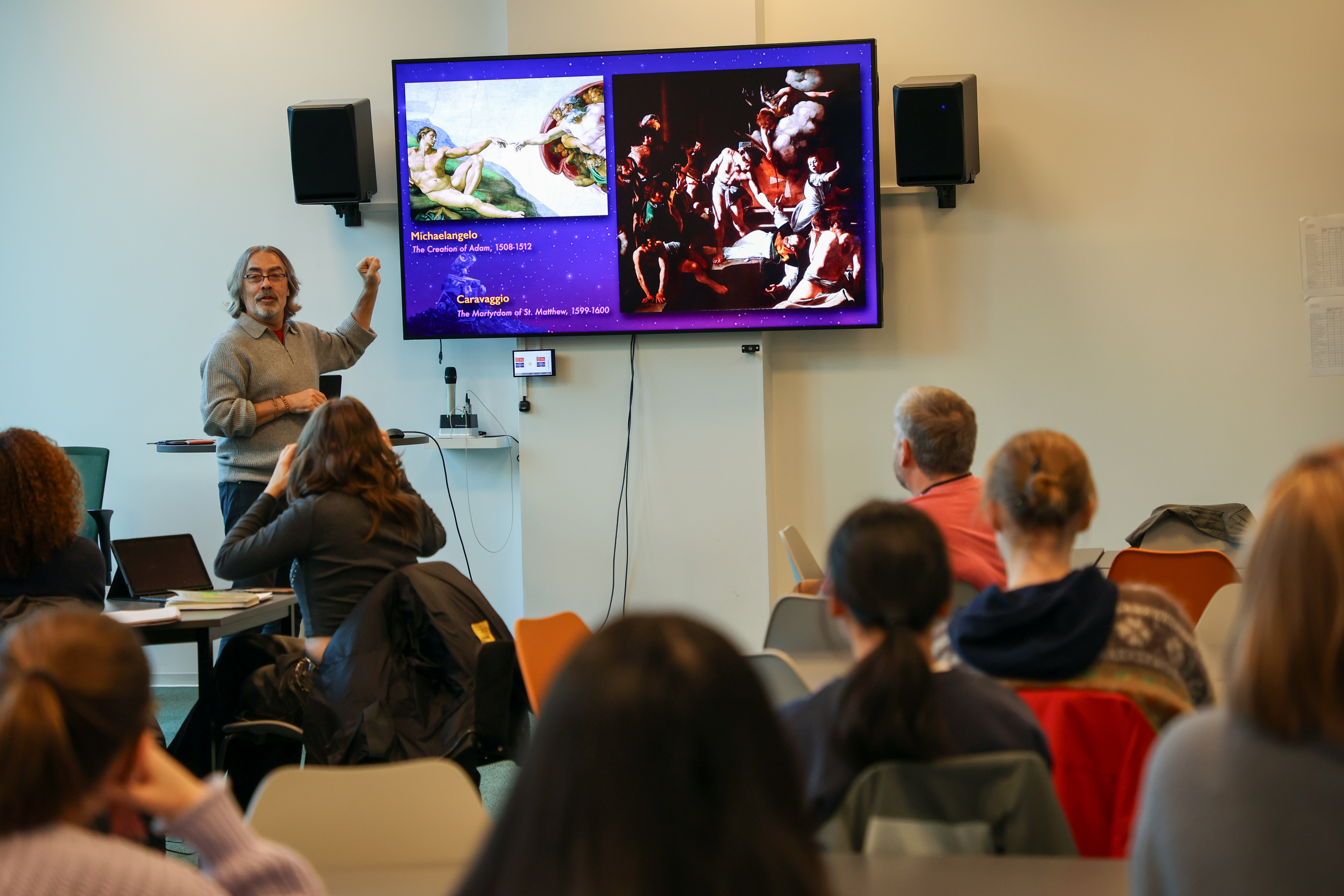
No Matter the Technology: Only Humans Can Elevate Art
Although Wise labelled Shrek from rival DreamWorks as “toilet humour” and Antz as a copy of A Bug’s Life, he was clear that pioneers must learn from one another and think outside the box in the pursuit of success.
One fascinating example from his time at Pixar was how the studio hired tailors to teach animators how to simulate garments that behaved like real clothing and according to the laws of physics.
“Before The Incredibles, we had only simulated a piece of clothing once in a film. Afterwards, that level of detail became the new industry standard, and that’s how we constantly work to improve technology with increasing complexity.”
Today, no speaker can avoid the topic of artificial intelligence (AI). Wise acknowledged several key challenges, such as artwork copyright and ownership issues AI training material, but he preferred to focus on the positive potential of this emerging technology to revolutionise the media world and create opportunities to work smarter and more efficiently.
“I don’t believe the end result will be that people are no longer part of the creative equation. There will always be a market for producing top-quality content, and that requires human creativity to guide the process and add that special touch. No matter how powerful the technology becomes behind the scenes, it’s human vision and direction that can elevate a work to new heights.”
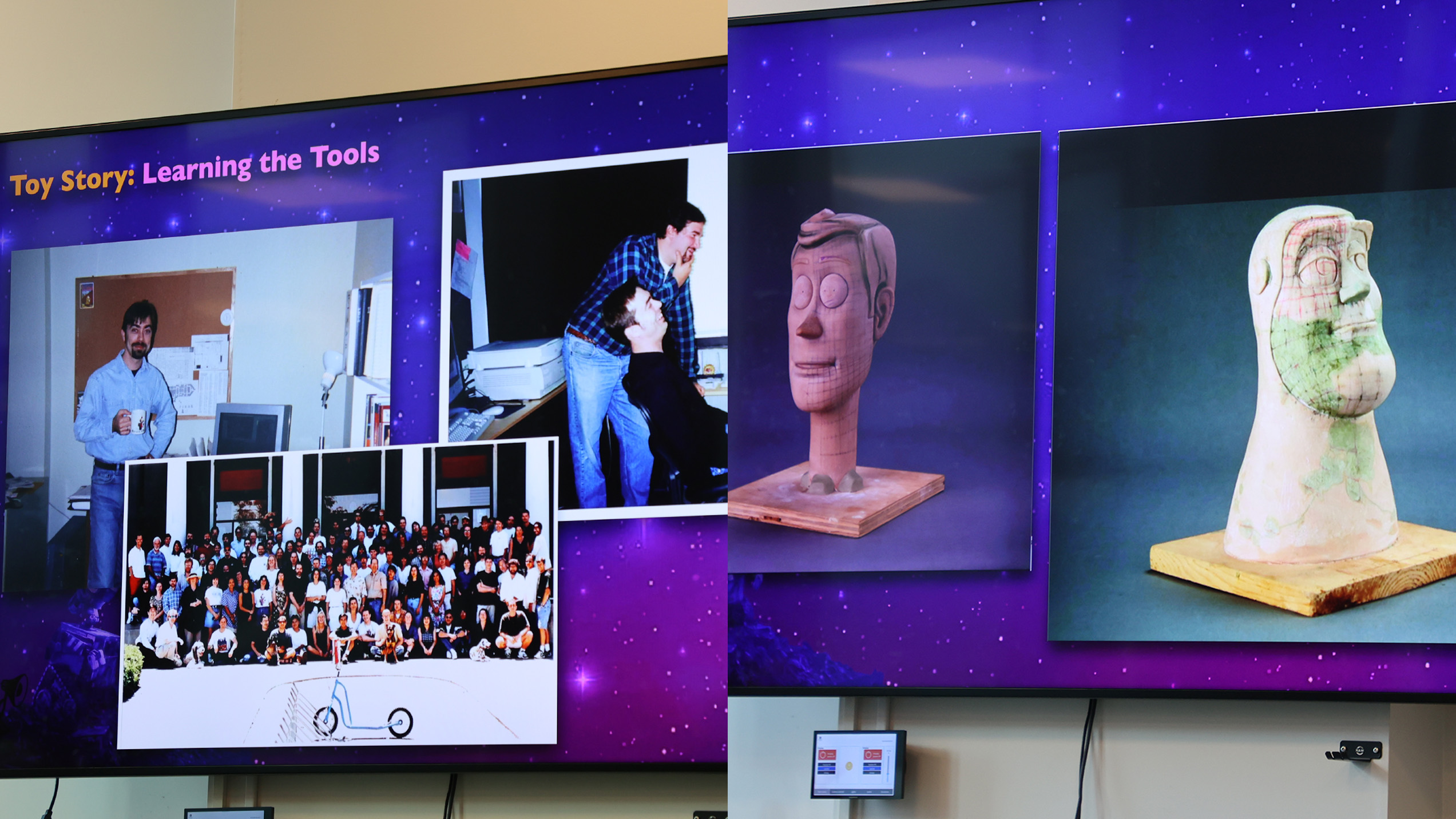
Time to Nerd Out and Befriend AI
After the lecture, we had a quick chat with Wise before he headed off to explore the world-class facilities of VUC's media faculty and later watch students showcasing their creative projects.
The Pixar pioneer was keen to stress that students shouldn’t fear AI and new technology taking away the jobs they’re training for.
“Even though I also find parts of the AI upheaval in society unsettling, I’m mostly fascinated. But you need to understand the technology to use it properly. I encourage students to get involved—it can empower them. And since the tools are evolving rapidly right now, you can partly influence that development through how you use them.”
Wise emphasised that it pays to be a nerd, a label he proudly gives himself: by exploring and gaining hands-on experience with AI, you build a conscious understanding of what the technology is—and isn’t.
“AI can definitely speed up a lot of tedious work and free up more time for us to elevate the artistic side of our craft, which is often the most enjoyable part. With good knowledge of AI you might even stand out by deliberately choosing not to use it in your art. What I’m interested in is seeing how small teams with lower budgets might produce complex, rich stories —and perhaps challenge the dominance of the established animation industry.”
Wise isn’t worried about whether Volda’s students have a future in the creative industries after graduation—as he discovered their work at the Animation Film Festival in Fredrikstad last year:
“I was deeply impressed by the films made by VUC students and how intelligent and sophisticated they were. They absolutely have a bright future.”

